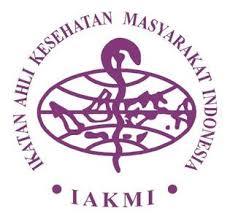FAKTOR RISIKO MAKROSOMIA DI INDONESIA
(ANALISIS SURVEI DEMOGRAFI DAN KESEHATAN INDONESIA (SDKI) 2017)
Abstract
Abstrak
Berdasarkan hasil Survey Demografi Kesehatan Indonesia (SDKI) 2017 diperoleh bahwa angka makrosomia di Indonesia mengalami penurunan hingga 0,5% dibandingkan 5 tahun sebelumnya, namun angka kematian bayi makrosomia mengalami peningkatan 0,1%. Sementara itu, komplikasi persalinan yang dialami ibu meningkat dari 35% menjadi 41%. Jumlah sampel berat lahir yang diteliti sebanyak 9395 sampel dengan pendekatan cross sectional yang kemudian dianalisis secara univariat dan bivariate dengan uji Chi-Square.Penelitian ini bertujuan untuk mengetahui faktor risiko kejadian makrosomia menurut data SDKI 2017. Hasil penelitian menunjukkan bahwa jenis kelamin (p=<0,001; PR=1,72 95% CI=1,4-2,1),riwayat ANC (p=>0,001 PR=1,48 95% CI=1,14-1,92), penggunaan alat kontrasepsi (p=0,001;PR=0,78 95%CI=0,64-0,94), serta paritas(p=0,01; PR=1,74 95%CI=1,31-2,30) memilik hubungan yang signifikan terhadap kejadian makrosomia. Kelahiran kembar, kepemilikan asuransi kesehatan, keinginan kehamilan, usia ibu, satus pernikahan, dan pendidikan ibu tidak memiliki hubungan yang signifikan dengan kejadian makrosomia.
Abstract
Based on the results of the 2017 Indonesian Health Demographic Survey (IDHS), it was found that the macrosomia rate in Indonesia decreased by 0.5% compared to the previous 5 years, but the macrosomia infant mortality rate increased by 0.1%. Meanwhile, childbirth complications experienced by mothers increased from 35% to 41%. The number of birth weight samples studied were 9395 samples with a cross sectional approach which were then analyzed univariately and bivariately with the Chi-Square test. This study aims to determine the risk factors for macrosomia according to the 2017 IDHS data. The results showed that gender (p=< 0.001; PR=1.72 95% CI=1.4-2.1), history of ANC (p=>0.001 PR=1.48 95% CI=1.14-1.92), use of contraceptives (p = 0.001; PR = 0.78 95% CI = 0.64-0.94), and parity (p = 0.01; PR = 1.74 95% CI = 1.31-2.30) significant for the incidence of macrosomia. Multiple births, possession of health insurance, desire for pregnancy, maternal age, marital status, and maternal education did not have a significant relationship with the incidence of macrosomia.
Keywords: Macrosomia, IDHS, risk factors




